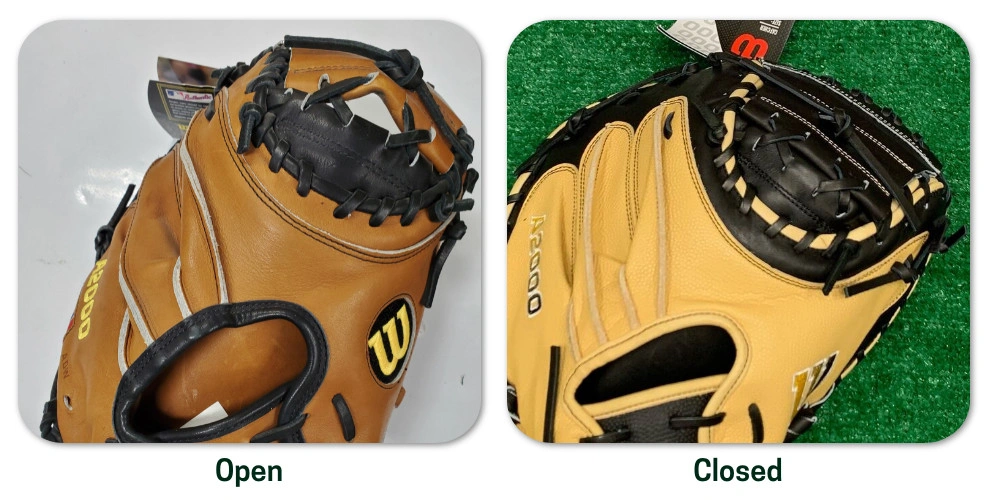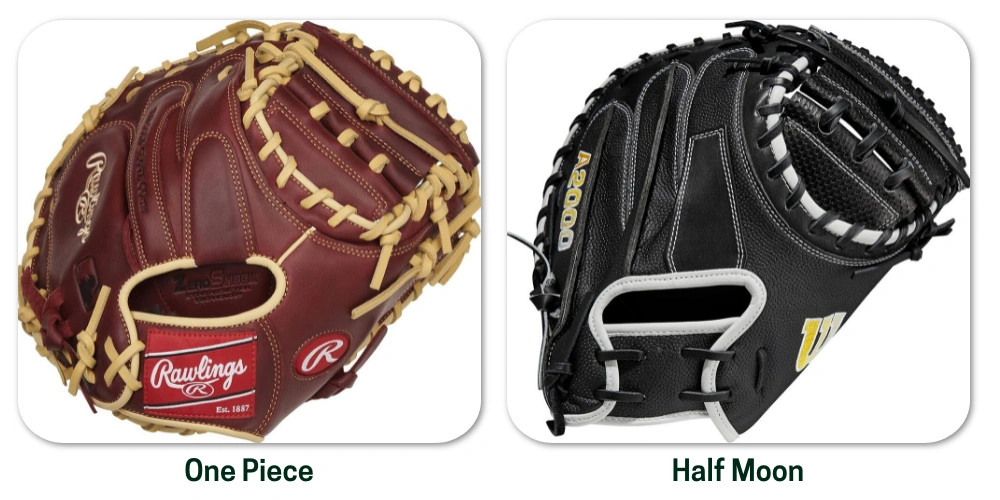How to Choose a Catcher's Mitt
Catchers have it rough. Their pitching counterparts steal their shine, they’re the only player on the field who wears a full suit of protective armor, and they must buy a different glove than everyone else. Yet they wouldn’t have it any other way.
For all of these reasons and more, catchers earn a different sort of respect among their teammates. They’re widely considered the captain of the field, and, despite not having a Captain’s armband like in soccer or a ‘C’ in their jersey like in football, baseball’s captains have their own signifier of superiority: a catcher’s mitt.
If you are (or plan to be) a catcher, it’s crucial that the mitt* you get will protect and support you behind the dish. This is why we’ve put together this comprehensive guide that will walk you through the key components of selecting your perfect catcher’s mitt. Whether you’re a first time catcher or have been your team’s backstop for multiple seasons, we’re here to direct you to the mitt of your dreams.
*It’s called a catcher’s mitt instead of a catcher’s glove because gloves have separate finger pockets. It’s an insignificant difference, but grumpy people get upset when it’s called a catcher’s glove, so if you’re going to be a catcher then you might as well use the correct word.
Back
The first component to decide on when shopping for catcher’s mitt is which back you’d prefer. A mitt’s ‘back’ is—you guessed it—what the back of the mitt looks like, and there are two options to choose from: open back and closed back.
Open Back:
Mitts with an open back have a wide opening between its wrist strap and the rest of the glove above it. The benefit to an open back catcher’s mitt is that it allows for increased wrist mobility, which might benefit you if your team’s pitchers are prone to spiking balls in front of home plate. However, open backs are much less popular than the other option mitts offer.
Closed Back:
Closed back mitts are the popular choice among catchers. The reason for this is simple: it offers much more support for the hand, wrist, and thumb when receiving balls. Catching fastballs for hours on end can make your hand pretty sore, and considering that catchers often have to appear behind the dish for multiple days in a row, it’s a good idea to keep their hand protected. The one downside to closed back mitts is that they’ll slightly reduce your wrist’s range of motion. Yet, most catchers are willing to make this trade-off in order to keep their hand healthy. The choice is yours.
Webbing
The next choice to make when selecting your perfect catcher’s mitt is which web you’d like. Again, there are (usually) two options to choose from: One Piece and Half Moon. But in this case, the only difference between the two webs is based on looks. Neither one provides pros or cons on the field, so feel free to choose whichever web you think looks the coolest.
Leather Type
When selecting a catcher’s mitt, it’s important to understand and consider which type of leather you’d prefer. We’ve previously covered the three different types of glove/mitt leather in our ‘Guide to Baseball Glove Styles/Types’ article, but I’ll include that info below, so you don’t need to seek it out.
Synthetic Leather:
Synthetic leather mitts consist of man-made materials (such as microfiber or carbon) blended with traditional leather. This is a great option for youth players because it’s made of a softer, lighter material, which will make it easier for young catchers to, well, catch. They’re also easy to break in, which is useful if a new mitt is needed last-minute.
It’s worth mentioning that synthetic gloves cost less than completely leather ones, as well. So if your little one is prone to losing track of their leather, a synthetic mitt might make sense.
Leather:
Traditional leather mitts are classic, timeless, and a step-up from synthetic in terms of quality. While they’re a bit more expensive than synthetic, the added durability they provide will cancel out a steeper price-tag (while still being much more cost-effective than premium leather). Also, these mitts are made from a softer type of leather, making them easy to close and break in.
In my opinion, nothing looks better on a catcher’s hand than a good old fashioned, traditional leather mitt. They’ve been preferred for over one hundred years, and, as the saying goes, if it ain’t broke, don’t fix it.
Premium Leather:
The third leather option is premium (aka Pro Series, or Pro Preferred) leather. These gorgeous—and expensive—mitt types are designed for dedicated baseball players, so if you’d prefer to buy premium then make sure you’re committed. And if you are, then don’t let this premium glove’s price-tag scare you away.
These mitts are made from full-grain, high-quality hide, which makes for enhanced durability, increased comfort, and a beautiful look. Yet, it’s important to know that new, premium leather mitts will arrive stiff, and could take months to break in. So if your season starts tomorrow, perhaps consider going with something softer.
As Rawlings’ ‘Pro Preferred’ mitt models suggest, premium leather is what the Pros wear—and they know what they’re doing. If you’re serious about your catching future, I’d highly recommend investing in a premium leather catcher’s mitt. You’ll get your money’s worth.
Sizing
Sizing is perhaps the most crucial aspect to consider when purchasing your catcher’s mitt. While all-position gloves are measured by length, catcher’s mitts are measured in terms of their circumference. Since this isn’t math class, I’m not going to explain circumference to you. The only reason I mention it is that you might be shocked to see mitt sizes ranging in the low to mid 30 inch range, as opposed to between 11 and 12 inches for gloves. Now you won’t be shocked when you see those big mitt sizes—and you’ve now got a fun fact for math class.
To help you decide on a mitt size, we’re going to break it into three age ranges:
-
If you’re 13 years old and under, should have a mitt that’s 32”-32.5” in size.
-
If you’re between 13-16 years old, should have a mitt that’s 32.5”-33” in size.
-
If you’re over 16 years old, go with a mitt that’s 33” or more in size.
Remember: these are only recommendations. If you’re 12 years old but have a professional basketball player’s hand size, go with a bigger mitt.
Also, if you’re still a youth player but would prefer additional padding for your catcher’s mitt, go with a slightly bigger size. But if you choose to do so, perhaps seek out a glove that has adjustable wrist straps or a wrist fastener to ensure the bigger mitt won’t slip off your hand when receiving.
Breaking In
The last aspect of choosing a catcher’s mitt is breaking them in. In general, catcher’s mitts take longer to break in than position player gloves. Yet, as I said earlier, your mitt’s break in time will depend on which leather type you opted for. If you want to purchase a synthetic leather or leather catcher’s mitt, the time it takes to break those gloves in will range from a few days to a maximum of two months. The trade-off being that a premium leather mitt (which might take three months to break in) will be more durable and protect your hand a bit better—but go with whatever leather type best suits your price range.
For this reason, if you already have a catcher’s mitt, make sure to keep it after you purchase a new one. And if you’re looking to buy your first catcher’s mitt, ask your teammates whether they have an old mitt laying around that you can use until yours is broken in fully. It’s best to keep a broken in mitt around at all times, so coaches don’t get grumpy when you can’t receive a pitch with your fresh leather. Nobody wants a grumpy coach on their hands.
Conclusion
There you have it: everything you need to find and buy the catcher’s mitt of your dreams. I’ll leave you with one piece of parting wisdom: as with every other type of baseball gear, comfort should come first when selecting your catcher’s mitt. While looking cool is all well and good, you’ll be using your new mitt a lot, so you should value trust and comfort over looks. Considering that you’re the team captain, feeling comfortable with your new leather will provide you the confidence and credibility you deserve behind the dish.
Just be sure to not call it a catcher’s glove. Grumpy coaches don’t like that.
About the Author
Grant Young is a Sports Content Writer for SidelineSwap. He graduated from the University of San Francisco in 2022 with a Master’s degree in creative writing, and also played on the University of San Francisco’s Division 1 baseball team for five years. You can find his published creative writing at his website, https://grant-young.


